Belgian Malinois vs German Shepherd: Which one is better? Or, even more common: Which one is which? These two dogs are so often confused many people still consider them a single breed!
The truth is, however, that the two breeds are not even closely related. Sure, both are European breeds, but this is as close as the genetic similarities go.
So, what’s the deal with these two breeds? Why are they so similar? And how to tell them apart?
Worry no more because I am here to answer all of your questions!
Here are all the differences between Belgian Malinois and German Shepherds:
Belgian Malinois Vs German Shepherd Quick Overview
| Belgian Malinois | German Shepherd | |
| Height | 22 – 26 inches | 22 – 26 inches |
| Weight | 40 – 80 pounds | 50 – 90 pounds |
| Coat color | Mahogany, fawn | 11 available coat colors |
| Temperament | Dominant, aloof | Confident, territorial |
| Lifespam | 10 – 14 years | 9 – 13 years |
Breed Origins
One of the key differences that set Belgian Malinois and German Shepherds apart is their different origin.
Both of these breeds originate from the same part of Europe. However, this is where their similarities end.
Here is where these two similar breeds come from, which could explain, in part, why they are so alike yet so different at the same time:
Belgian Malinois
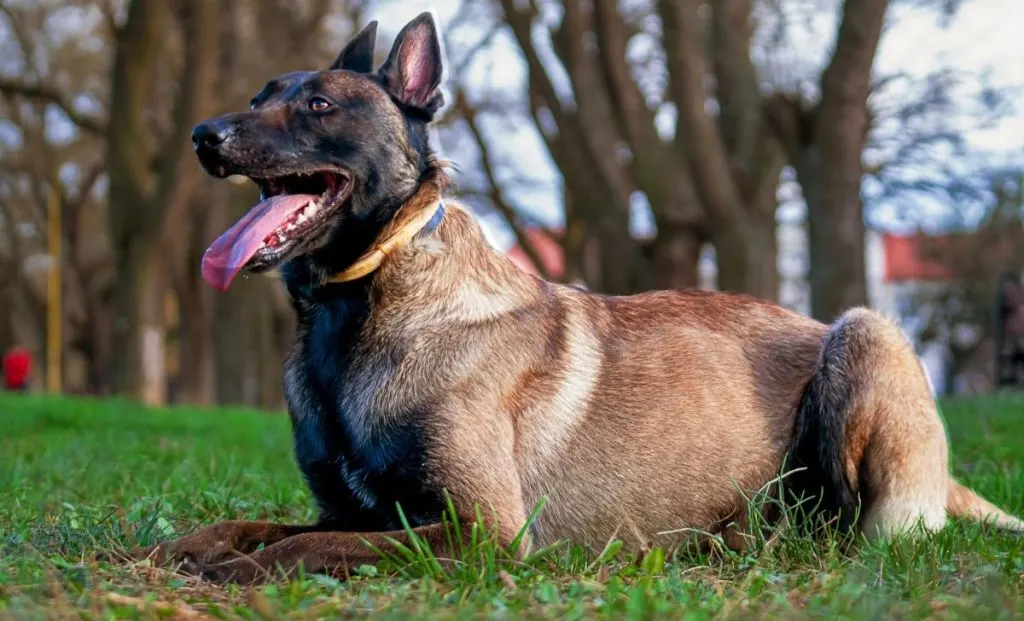
Belgian Malinois is one of the four Belgian shepherd dog breeds. The other three are:
- Belgian Sheepdog
- Belgian Tervuren
- Belgian Laekenois
This dog comes from the town of Mechelen, also known as Malines. The first mentions of this breed are from the late 1800s, and it is believed the breed comes from the local shepherd dogs.
It’s true; the Malinois was first bred as a herding breed and not as a guard dog. However, over time, due to its protective and dominant temperament, this pup became one of the most popular police dogs and watchdogs.
It was also used for military work, as it was quick to follow commands.
Even today, most Malinois are working dogs, and not many people keep them as family pets only.
German Shepherd
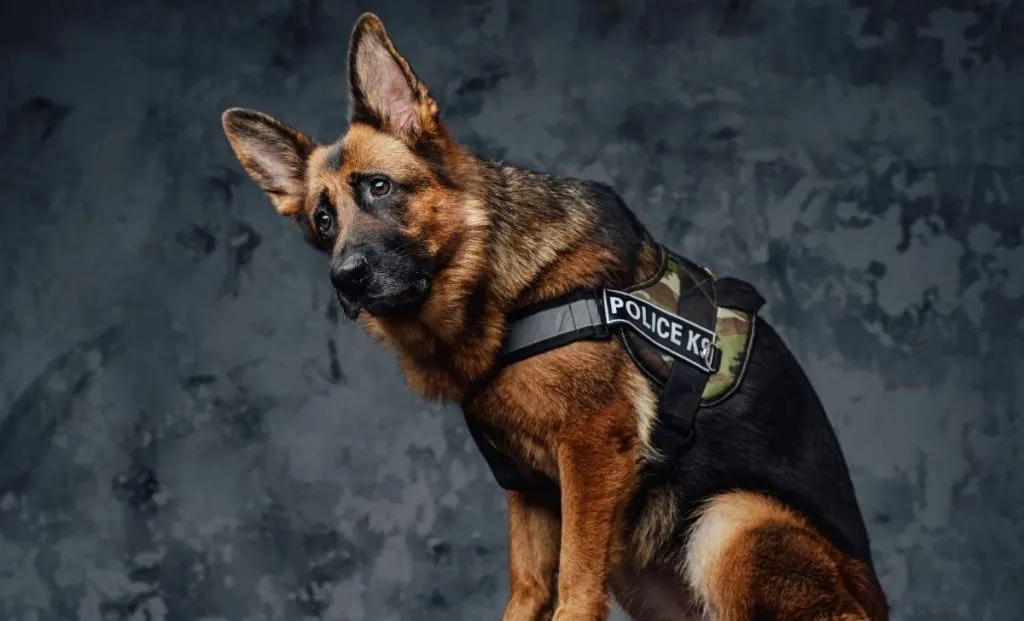
The German Shepherd breed was developed by Max von Stephanitz in 1899, who combined many German herding breeds to develop an ultimate shepherd dog.
Just like Malinois (and as its name suggests), the German Shepherd was first bred to keep an eye out on cattle. While many GSDs do this function to this day, others are used as police dogs and guard dogs worldwide.
In fact, the German Shepherd dog is probably the most famous police dog breed in the world! When we mention the K-9 unit, most people will immediately think about these glorious canines in working uniforms.
Due to its popularity, many people own German Shepherds as family dogs, especially long-haired GSDs that are even more adorable than their short-haired counterparts (if this is even possible).
Appearance
The main reason why these two different breeds look so similar is, of course, their appearance. These two breeds seem to come in the same size, the same coat color, and the same features.
However, at a second glance, you’ll likely start to notice that they actually look very unlike each other.
This is how each individual dog breed looks and how you can tell them apart:
Belgian Malinois
Belgian Malinois is a large dog breed. According to the American Belgian Malinois Club, this is a well-balanced, square-built dog that is a perfect combination of strength and elegance.
They have a long head, medium-length muzzle, almond-shaped eyes that are dark brown in color, and small, triangular, upright ears.
Malinois have short, straight, and water-resistant coats with a thick undercoat. While the main hair color of this breed is fawn with a black mask, there are a few more Belgian Malinois shades in which you can find these pups.
German Shepherd
GSD is a large and muscular dog breed with a thin waist and strong legs.
According to the American Kennel Club (AKC), they have a long muzzle, large, upright ears, and big, almond eyes that are brown or dark brown in color.
As for their coats, they are medium-length and significantly longer than the Belgian Malinois coat. The hair is typically straight, though some GSDs have wavy outer hairs. They also have a thick undercoat, making them huge shedders.
There is also a long-haired GSD variety, but these pups are quite rare. The long-haired German Shepherd doesn’t have an undercoat, making the shedding amount somewhat more manageable.
As for the German Shepherd coat colors, there are a few more varieties compared to Belgian Malinois.
While sable with a black mask is the original GSD’s fur color, these pups also come in other shades, such as tan and black and solid black.
Size
The size difference is another way in which you can differentiate these doggies, but only if you know what to look for.
Both Belgian Mals and GSDs are large dog breeds that stand between 22 and 26 inches in height. However, they have a rather different build, which will reflect on their weight.
Belgian Malinois are slimmer than German Shepherds. Female Mals typically weigh between 40 and 60 lbs, while males are somewhat heavier, reaching up to 80 lbs.
On the other hand, a male German Shepherd has an average weight of 65 to 90 lbs, while females weigh between 50 and 70 lbs.
Not only are GSDs bulkier, but their longer coat further adds to the apparent size difference.
Temperament
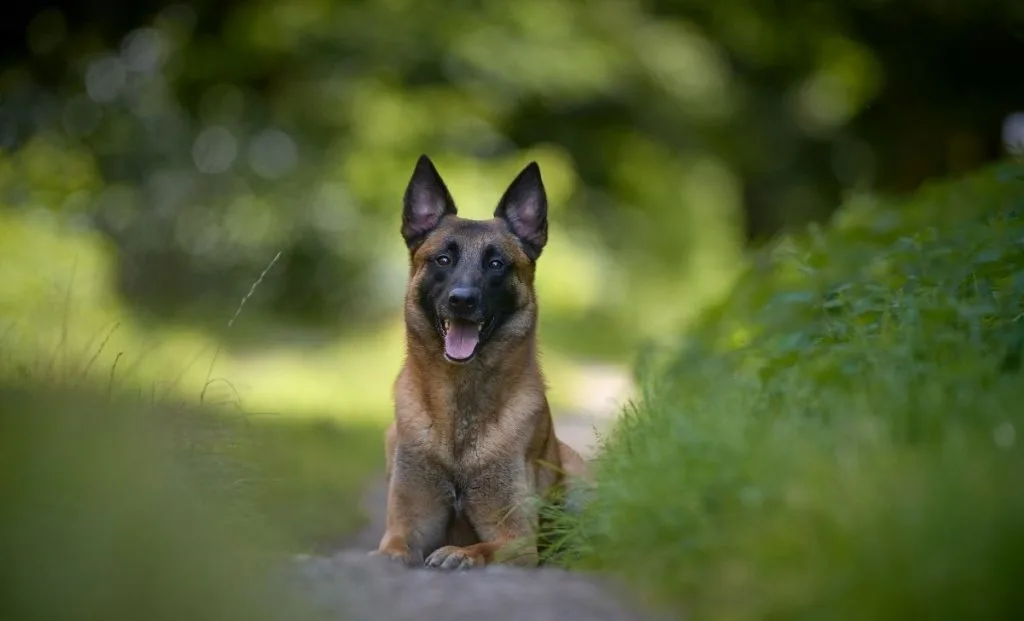
The personality traits of both breeds are quite similar, considering how both were bred with the same purpose.
These are hard-working dogs that were designed to listen to their owners and protect them and their households at all costs. They are extremely confident, a trait that comes in handy when watching over a flock of stubborn sheep.
At the same time, they are loyal and devoted to their humans, which is why most people use them as guard dogs and personal protectors.
Due to their high intelligence, they need something to do all the time. If you allow them to get bored, they can become destructive or develop some bad behaviors.
Mental stimulation is the key to ensuring your herding dog is happy.
However, both have some unique characteristics that can affect your decision in which of these pups is the right dog for you.
Belgian Malinois
Belgian Malinois are hard-driven pups with a hard work ethic, making them ideal herding dogs.
However, they are not too playful, and they are much more wary of strangers compared to German Shepherds. They will need more socialization to get used to having unknown people in the house.
Also, these pups can be quite territorial. While this makes them excellent guard dogs, you’ll need to work with them quite a lot.
German Shepherd
German Shepherds are confident and protective. They, too, can be somewhat aloof around strangers, but they will warm up to new people much quicker than Belgian Malinois, especially if you’ve socialized them on time.
In general, their temperament is much milder than that of a Belgian Malinois, and GSDs are more likely to become friendly towards the entire household. Because of this, many people use them as guide dogs or dogs for rescue work.
Of course, this doesn’t mean you can neglect socialization. These pups should experience new surroundings, people, and animals as early as possible to avoid any issues later on.
Also, they are prone to separation anxiety, so don’t leave them unattended for too long. If you work long office hours, make sure there is someone there to look after them and keep them from becoming destructive.
Energy Levels
Belgian Malinois and German Shepherds are both dogs with high activity levels. This means they need lots of exercise and lots of playtime.
If you have either of these pups, you’ll need to prepare for long walking sessions. However, don’t expect them to be enough. These dogs need to go jogging, run around, or at least play fetch for about an hour each day.
This makes them a perfect choice for someone who leads an active lifestyle and wants a dog that can accompany them.
However, their high exercise needs also mean they are in need of constant training, and not everyone can provide them with this.
Their human family needs to be able to help deplete their energy levels. Otherwise, you are risking ending up with a destructive dog.
Trainability
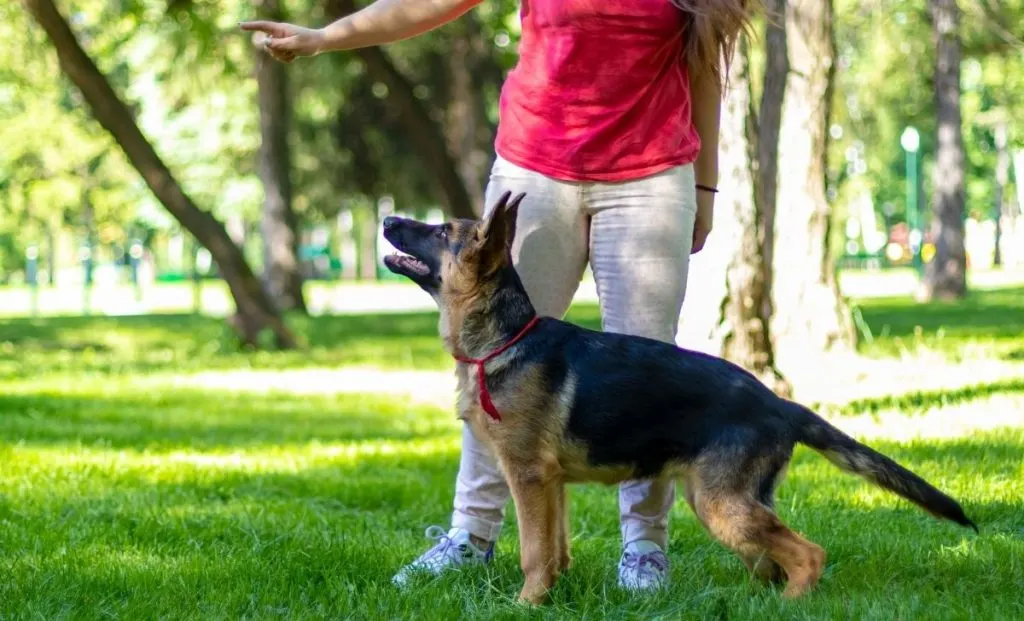
Trainability is really important when it comes to dog breeds with a territorial and dominant temperament. The large size of these dog breeds only further increases this, as you don’t want to end up with a big dog you can’t control.
Luckily, both are quite trainable dogs as they are loyal and eager to please.
The only issue lies with their dominant nature, especially if you own males. You will need to show both the Belgian Malinois and German Shepherd that you are the alpha dog of the pack and not the other way around.
A guide to help you with Belgian Malinois training can be especially useful to beginners who haven’t had a chance to deal with this breed.
Despite their tough appearance, these are delicate dogs, so you need to be mindful during training. Don’t yell at them or use physical force as a punishment. This will do more harm than good.
Positive reinforcements are crucial, and you’ll see that your dog responds better to this kind of treatment.
Also, as these are highly intelligent dogs, they’ll quickly learn any new tricks. It’s no wonder they are so commonly used by the police and military!
Dietary Needs
Another important care aspect is feeding your pup. This is quite the same for these two popular dog breeds, as they don’t have any special dietary preferences that would set them apart.
These dogs need food that is specially made to cater to the needs of a large and active dog breed.
No, getting a large pack of regular dog food just won’t do. Both GSDs and Mals have different dietary needs than breeds that are of similar size but lead different lifestyles, such as Labrador Retrievers.
Look for foods that list protein sources as the first ingredient. This can be anything from poultry and beef to fish.
In fact, due to their high protein needs, many people prefer feeding these pups raw diets. This can be an excellent choice! However, it’s essential to contact a veterinarian before you make this transition. They can help you make a proper feeding plan for your dog.
You can also give your dog treats, especially during training. Just remember not to go overboard, as this can lead to obesity. Treats should never make more than 10% of daily calorie intake.
Health
Considering the health and lifespan of your future pet is another important aspect when you’re deciding on a dog breed. We all want our pets to be with us for as long as possible.
Not to mention how it’s always a better and more ethical choice to support a breeder who is selling a healthy breed.
As Belgian Malinois and German Shepherds are not related, they are prone to different genetic conditions.
However, both share health problems that are common in dogs of a larger size, such as hip dysplasia and elbow dysplasia, joint disorders you can recognize if you see an old dog limping or walking slower than before.
Belgian Malinois
Belgian Malinois are a generally healthy breed. However, they are prone to a few health issues. This includes hemangiosarcoma, a specific type of tumor that affects blood cells.
Another common disease in Mals is hypothyroidism.
Despite these concerns, Belgian Malinois can still live a pretty long and healthy life. Their average lifespan is between 10 and 14 years.
This makes them among some of the longest-living large dog breeds.
German Shepherd
While also considered a healthy breed, GSDs are still prone to a few more health concerns than Belgian Malinois.
This includes conditions such as degenerative myelopathy (DM), Perianal Fistula, cauda equina syndrome, and lumbosacral syndrome/disease.
Due to all this, they have a slightly shorter life expectancy than Belgian Mals, as they typically live between 9 and 13 years.
Buying a dog from a reputable breeder can greatly increase their quality of life, and the chances of these pups developing some genetic disorders are lower than if you were to buy from irresponsible people who don’t conduct any health tests on their dogs.
The Bottom Line
So, there you have it. The truth about the Belgian Malinois vs German Shepherd debate.
It’s hard to determine which dog breed is better overall. Both pups have their good sides, as well as their flaws. In the end, it all comes down to your expectations.
German Shepherds are usually a better choice for people who want a family dog that will also keep their homes safe. Also, as they are somewhat friendlier than Mals, they might be a better choice for someone who doesn’t have too much experience in dog training.
However, if you want a working dog that won’t cost much in veterinary bills, Belgian Malinois might be a better option.
One thing to keep in mind: These are not dogs that are suitable for beginners. They need firm owners who will know how to show them who is the leader of the pack.
Also, they don’t do that well when left alone, so you’ll need to dedicate a lot of time to them.
Either way, you’ll end up with a dog who has not just good looks but also an amazing personality.
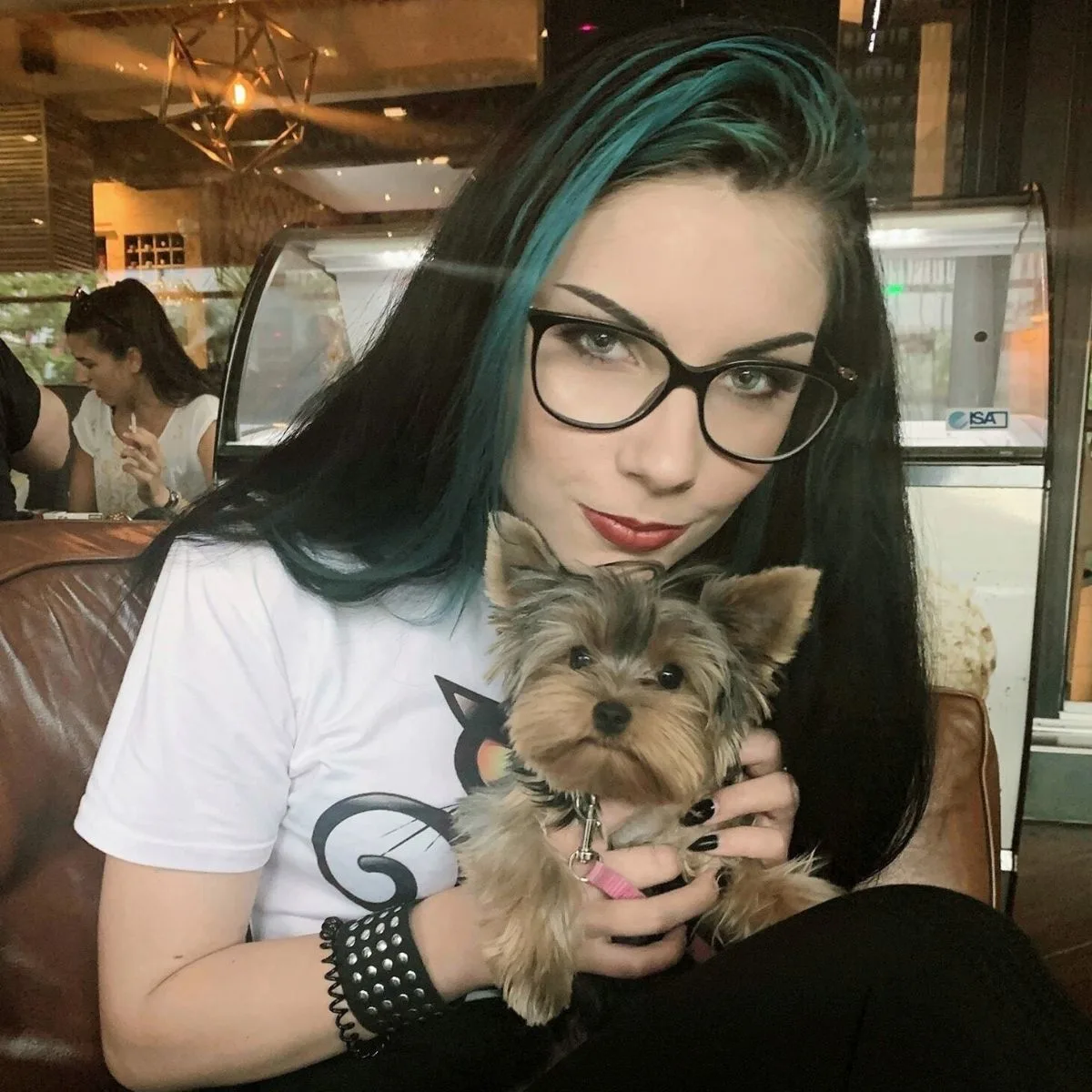
Vanja’s passion for writing started at an early age, which is why she pursued Journalism as her college degree. She can research any topic and find all the information before you bat an eye, which is a great thing for her job but a terrible one for her husband.
Even as a young child, she fell in love with everything fluffy – but dogs have a special place in her heart due to her childhood companion, a Corgie named Archie.
Motivated by her experiences and driven by a desire to give back to her four-legged companions, she spends her free time volunteering at a local dog shelter.
